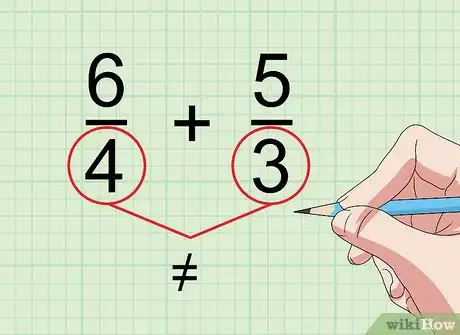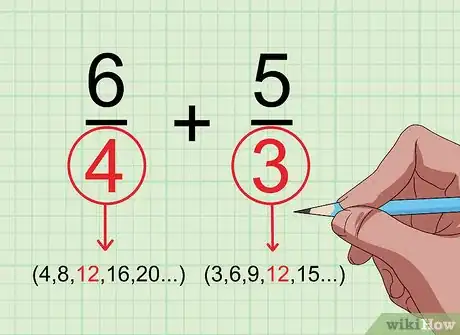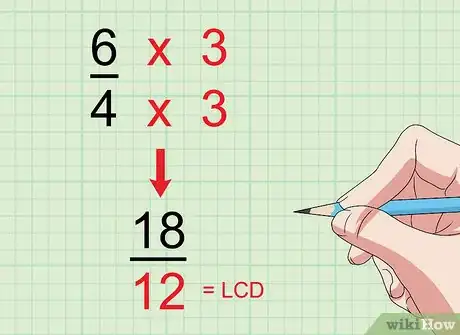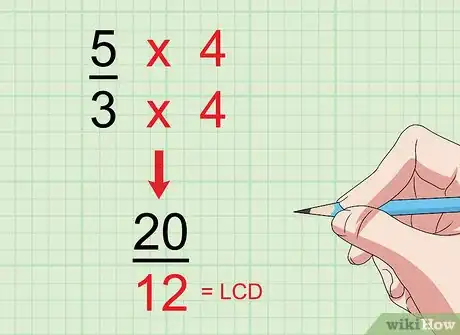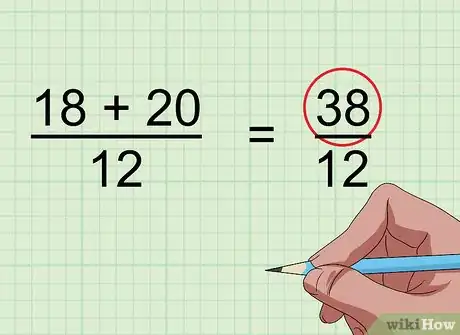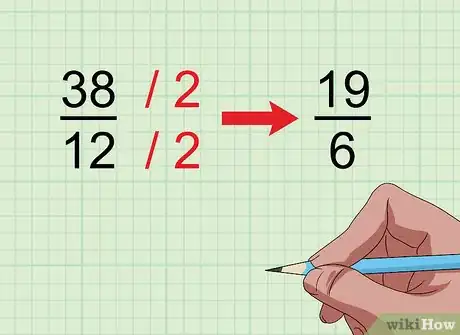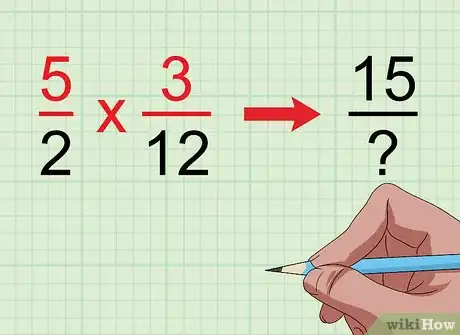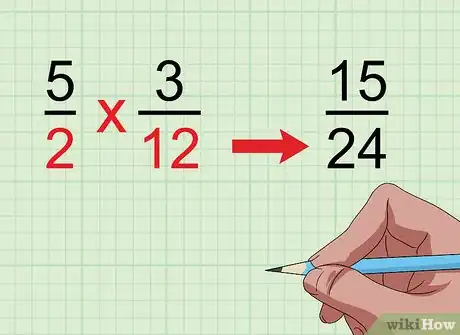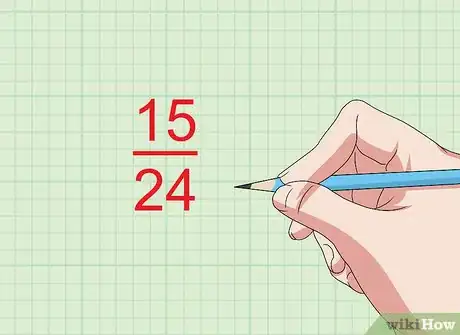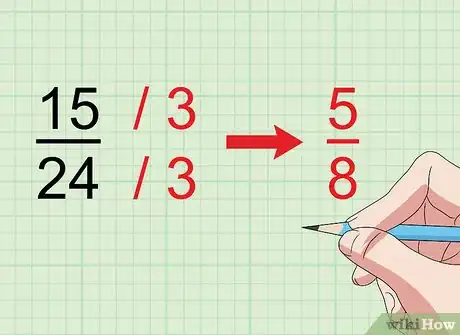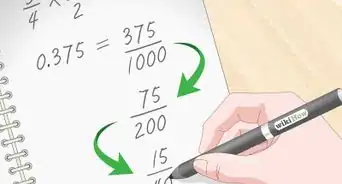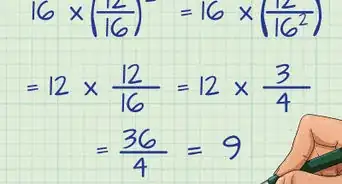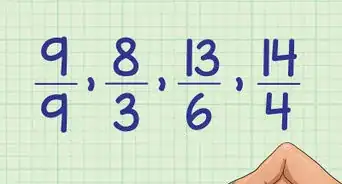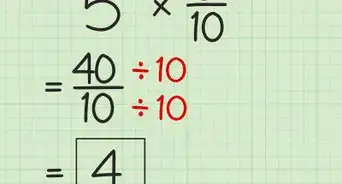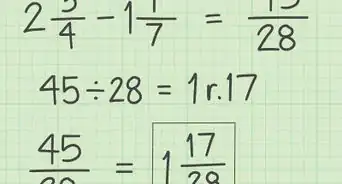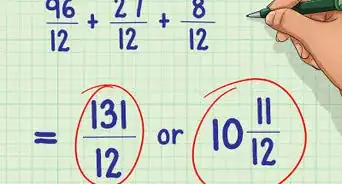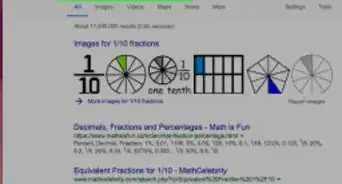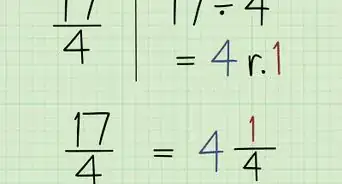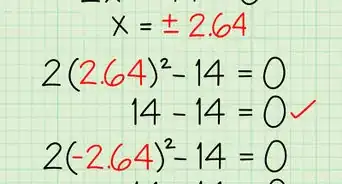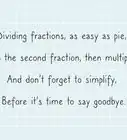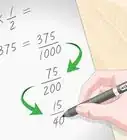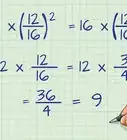This article was co-authored by Grace Imson, MA. Grace Imson is a math teacher with over 40 years of teaching experience. Grace is currently a math instructor at the City College of San Francisco and was previously in the Math Department at Saint Louis University. She has taught math at the elementary, middle, high school, and college levels. She has an MA in Education, specializing in Administration and Supervision from Saint Louis University.
wikiHow marks an article as reader-approved once it receives enough positive feedback. In this case, 100% of readers who voted found the article helpful, earning it our reader-approved status.
This article has been viewed 88,909 times.
A lot of times you will add fractions when putting parts of two things together. You might sometimes multiply fractions if you need to find a portion of a fraction. Unlike adding and multiplying whole numbers, adding and multiplying fractions is a little more complicated because you are working with numerators and denominators.
Steps
Adding Fractions
-
1Look at the denominators. The denominator is the number below the fraction bar. In order to add fractions, the denominators of the fractions have to be the same. If they are not the same, you will need to find the lowest common denominator.
- The denominator tells you how many pieces make one whole.[1] If the two fractions do not use the same denominator, then you are not adding same-sized pieces, and your answer will be incorrect.
- For example, if you are adding the fractions and , you would compare the 4 and the 3. They are different, and so you cannot add these fractions as is, because you cannot add fourths and thirds together.
-
2Find the lowest common denominator (LCD) of the two fractions. If the denominators are the same, you can skip this step. If the denominators are not the same, you must find the LCD. To find the LCD, you are looking for the lowest common multiple of the two denominators. A multiple is a number that results from multiplying a number by another number. [2] One way to find the LCD is to make a list of multiples of the two denominators until you find one that matches. To learn other ways to find the LCD, read Find the Least Common Denominator.
- For example, if your denominators are 4 and 3, first list multiples of 4 (4, 8, 12, 16, 20...) and then list multiples of 3 (3, 6, 9, 12, 15…). The lowest multiple the two numbers have in common is 12, so 12 is the least common denominator.
Advertisement -
3Find the new numerator of the first fraction. The numerator is the number above the fraction bar. To find the new numerator, compare the original denominator to the LCD. Determine what factor you have to multiply the original denominator by to get to the LCD. Then, multiply the numerator by this same factor.
- The numerator tells you how many pieces you have.[3]
- Just remember when preparing fractions for adding that whatever you do to the denominator, you must also do to the numerator.
- For example, if the original denominator was 4, and the LCD is 12, you would have to multiply the original denominator by the factor 3, since . As such, you would then multiply the numerator by the factor 3. If the original numerator was 6, then the new numerator would be 18, since . So, your new fraction becomes .
-
4Find the new numerator of the second fraction. To do this, follow the same process you did to find the new numerator for the first fraction.
- For example, if the original denominator was 3, and the LCD is 12, you would have to multiply the original denominator by the factor 4, since . As such, you would then multiply the numerator by the factor 4. If the original numerator was 5, then the new numerator would be 20, since . So, your new fraction becomes .
-
5Add the numerators of the two fractions, and place the sum over the LCD. Now that you have found the lowest common denominator, you are adding individual pieces that are the same size, so you can proceed with adding the numerators. You do NOT add the denominators, because the size of the pieces you are adding does not change, only how many of the pieces you have.
- For example, if you are adding , you will add the numerators 18 and 20. . Then, you will place 38 over the LCD, which is 12. So the sum is .
-
6Simplify your answer, if possible. Usually you will be asked to reduce, or simplify a final answer if it is a fraction. To simplify, find the highest number that will divide evenly into the numerator and denominator,[4] then divide the numerator and denominators by that number.
- For example, if your answer is , divide the numerator and denominator by 2. and , so the simplified fraction is . Since 19 cannot be divided evenly by any other number, you cannot simplify any further.
Multiplying Fractions
-
1Multiply the numerators. This will give you the numerator of the product. The numerators are the numbers above the fraction bar.[5]
- The product is the answer to a multiplication problem.
- Unlike when adding fractions, multiplying fractions does not require having a least common denominator. This is because when taking a part of a fraction, you are changing the number of pieces in the whole.
- For example, if you are multiplying and , the numerator of your answer (product) will be 15, since .
-
2Multiply the denominators. This will give you the denominator of the product. The denominators are the numbers below the fraction bar.[6]
- For example, if you are multiplying and , the denominator of your product will be 24, since .
-
3Write your new product. To get the product of the two fractions, simply put together the numerator and denominator you found by multiplying.
- For example, if you found the numerator by multiplying and the denominator by multiplying , your answer (product) is .
-
4Simplify your answer, if possible. Usually you will be asked to reduce, or simplify a final answer if it is a fraction. To simplify, find the highest number that will divide evenly into the numerator and denominator,[7] then divide the numerator and denominators by that number.
- For example, if your answer is , you can divide the numerator and denominator evenly by 3. and , so the simplified fraction is . Since 5 cannot be divided evenly by any other number, you cannot simplify any further.
Community Q&A
-
QuestionHow do I simplify improper fractions?
 DonaganTop AnswererSimplify by expressing the improper fraction as a mixed number. Divide the numerator by the denominator. That will yield a quotient consisting of a whole number and perhaps a remainder, expressed as a fraction with the same denominator as the one in the improper fraction. The whole number will be the whole number of the mixed number, and the remainder will be the fraction of the mixed number.
DonaganTop AnswererSimplify by expressing the improper fraction as a mixed number. Divide the numerator by the denominator. That will yield a quotient consisting of a whole number and perhaps a remainder, expressed as a fraction with the same denominator as the one in the improper fraction. The whole number will be the whole number of the mixed number, and the remainder will be the fraction of the mixed number. -
QuestionI still don't know exactly how to simplify fractions yet, and I have a huge test coming up! Can you please help?
 DonaganTop AnswererSimplify a fraction by dividing some whole number into both the numerator and the denominator. If necessary, do it again until there is no longer a whole number that will divide evenly into both the numerator and the denominator, at which point the fraction is fully simplified. For example, to simplify 42/54, divide 3 into both numbers of the fraction: 42 ÷ 3 = 14, and 54 ÷ 3 = 18. So the fraction becomes 14/18. We're not done, however, because 14 and 18 are both divisible by 2: 14÷2 = 7, and 18 ÷ 2 = 9. So the fraction becomes 7/9. That's fully simplified, because no whole number (besides 1) will evenly divide into both 7 and 9. So 42/54 simplifies to 7/9.
DonaganTop AnswererSimplify a fraction by dividing some whole number into both the numerator and the denominator. If necessary, do it again until there is no longer a whole number that will divide evenly into both the numerator and the denominator, at which point the fraction is fully simplified. For example, to simplify 42/54, divide 3 into both numbers of the fraction: 42 ÷ 3 = 14, and 54 ÷ 3 = 18. So the fraction becomes 14/18. We're not done, however, because 14 and 18 are both divisible by 2: 14÷2 = 7, and 18 ÷ 2 = 9. So the fraction becomes 7/9. That's fully simplified, because no whole number (besides 1) will evenly divide into both 7 and 9. So 42/54 simplifies to 7/9. -
QuestionHow can I do one using the butterfly method?
 DonaganTop AnswererGo to moveitmaththesource.com/realfractions/butterflyfractio.html.
DonaganTop AnswererGo to moveitmaththesource.com/realfractions/butterflyfractio.html.
Things You'll Need
- Paper
- Pencil/pen
References
- ↑ https://www.khanacademy.org/math/cc-third-grade-math/imp-fractions/imp-what-fractions-mean/v/numerator-and-denominator-of-a-fraction
- ↑ https://www.mathsisfun.com/definitions/multiple.html
- ↑ https://www.khanacademy.org/math/cc-third-grade-math/imp-fractions/imp-what-fractions-mean/v/numerator-and-denominator-of-a-fraction
- ↑ https://www.mathsisfun.com/simplifying-fractions.html
- ↑ Grace Imson, MA. Math Instructor, City College of San Francisco. Expert Interview. 1 November 2019.
- ↑ Grace Imson, MA. Math Instructor, City College of San Francisco. Expert Interview. 1 November 2019.
- ↑ https://www.mathsisfun.com/simplifying-fractions.html
